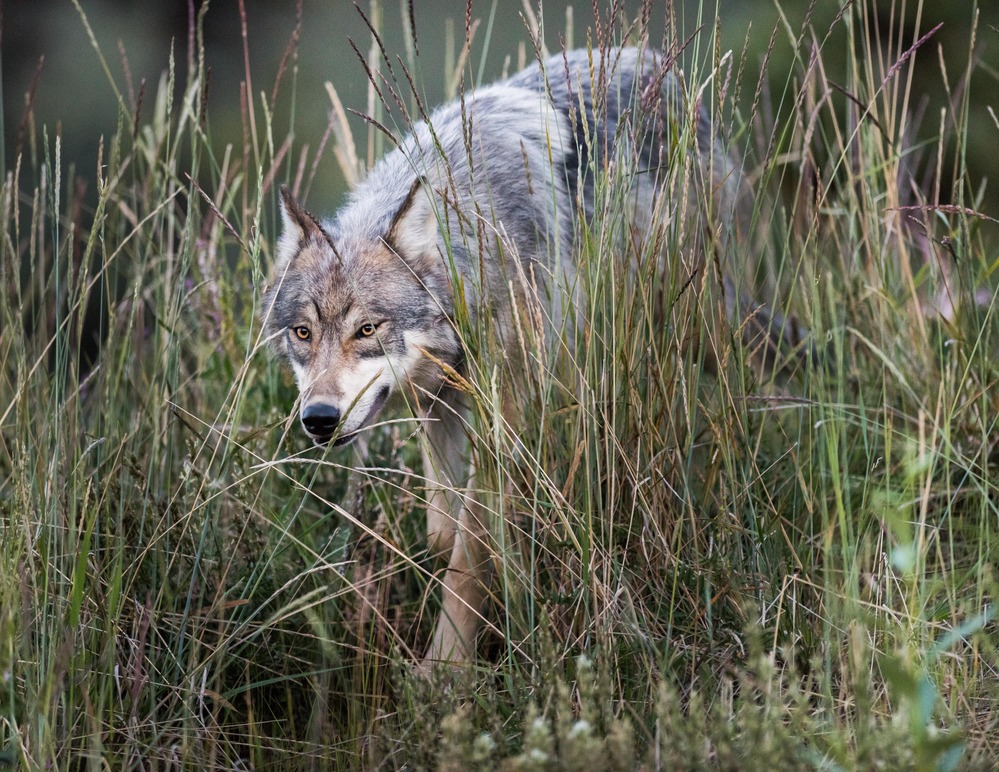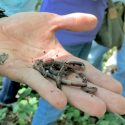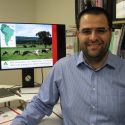Lethal management of wolves in one place may make things worse nearby

Killing wolves to prevent predation on livestock may protect one farm but harm neighbors, according to preliminary conclusions of UW–Madison researchers. National Park Service
Lethal management of wolves following wolf attacks on livestock may have unintended consequences, a new study by researchers at the University of Wisconsin–Madison suggests.
When a wolf was killed under government programs to address wolf predation near a farm that had recently reported an attack, the authors of the study say two things happened: That farm experienced a decrease in the likelihood of livestock losses to wolves, but surrounding farms showed an increase.
Adrian Treves and Francisco J. Santiago-Avila regard their conclusions, published Jan. 10, 2018 in the journal PLOS ONE, as preliminary given the nature of the experimental data, which they did not collect, and because nonlethal interventions served as a pseudo-control group for comparison. According to Santiago-Avila, the study is an attempt to apply a higher standard of science to an age-old conflict between carnivores and farmers.
“We wanted to evaluate if lethal management in a particular area once there is an attack by wolves on livestock in that area is actually effective in mitigating that attack,” says Santiago-Avila. “Or another alternative would be if this is actually making things worse.”
Treves is a professor at UW–Madison’s Nelson Institute for Environmental Studies and head of the Carnivore Coexistence Lab. Santiago-Avila, his graduate student, is lead author of the study.
Treves and Santiago-Avila analyzed data acquired by the Little River Band of Ottawa Indians in Michigan. The data was collected by the Michigan Department of Natural Resources and consisted of 230 cases of wolf attacks on livestock in the Upper Peninsula from 1998 to 2014. Of those cases, 199 resulted in some form of intervention from the DNR. Thirty-one of the interventions involved killing a wolf, while 168 employed nonlethal methods for deterrence. Nonlethal methods include giving the owner advice, using guard dogs, or using fladry — colored flags that hang from fences to deter wolves from crossing them.
Treves and Santiago-Avila used three spatial scales around the site of an attack, first at one square mile, then at 26 square miles, and up to 320 square miles, in order to detect any “spillover effects” after lethal intervention.
The results showed farms that had a wolf killed experienced a 27 percent decrease in risk of another attack, but this was offset by a 22 percent increase at a number of farms in the same township — making the net benefit zero, according to the study.
When a wolf was killed to address predation near a farm that had recently reported an attack, that farm experienced a decrease in the likelihood of livestock losses, but surrounding farms showed an increase.
One factor that could explain this spillover effect, says Santiago-Avila, is that wolves have strictly ordered social lives. Because each animal has a different role in the pack, killing one wolf may cause the pack to split up and spread out into new territory, potentially seeking food that requires fewer members to hunt. But the effect over all of the years captured in the study remained constant, reducing the likelihood that distribution was a main factor.
Other explanations may account for it, too, but in order to conduct an experiment that meets the gold standard of science and draws stronger conclusions, Santiago-Avila says, changes to how the data are reported and tracked are necessary.
“It starts with accurate and sophisticated monitoring of what you’re doing on the ground,” Santiago-Avila said. “And that’s one of the main concerns that the Little River Band had, that they couldn’t see how they would be evaluating the data or if there was an intention to do so.”





